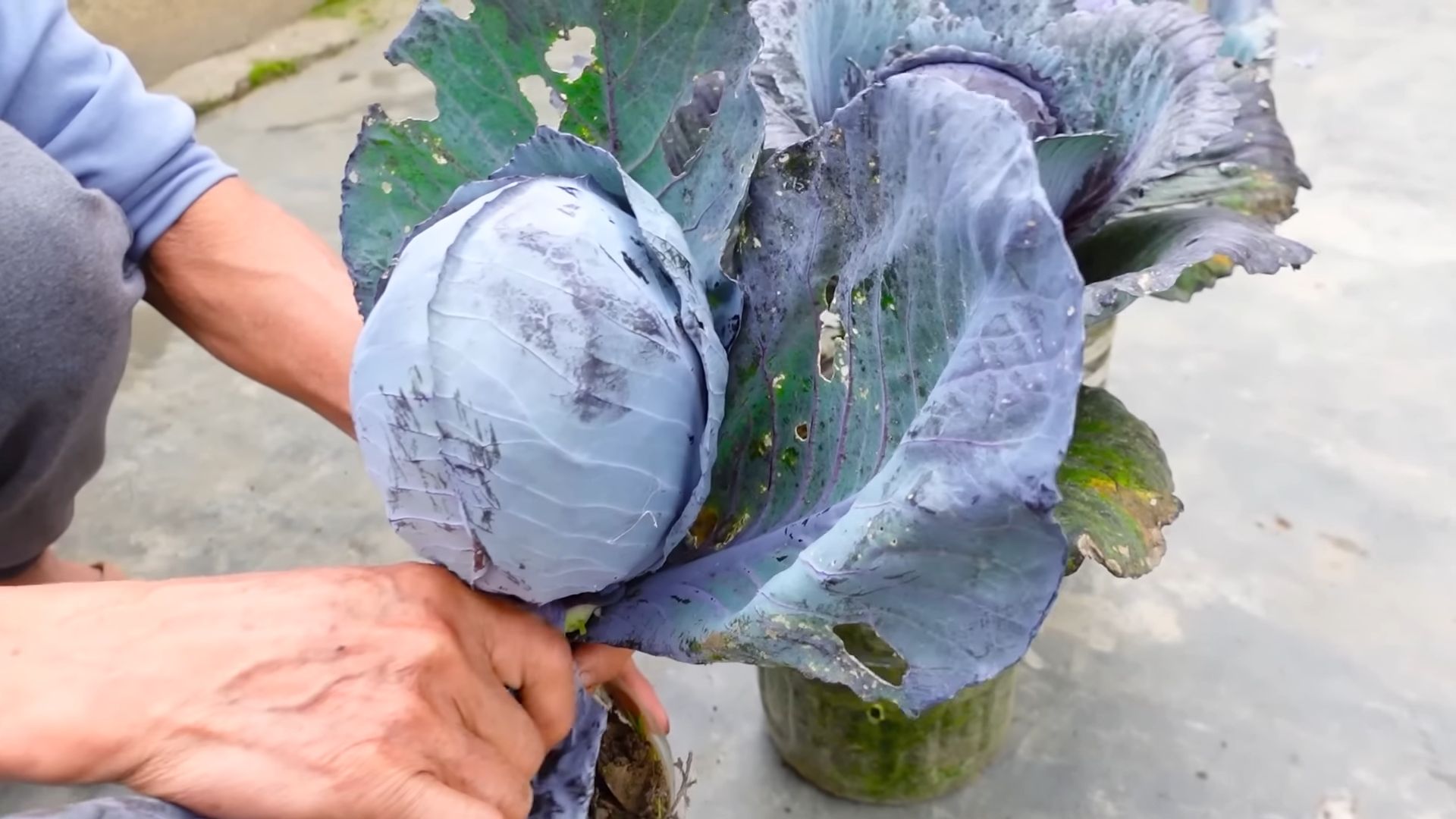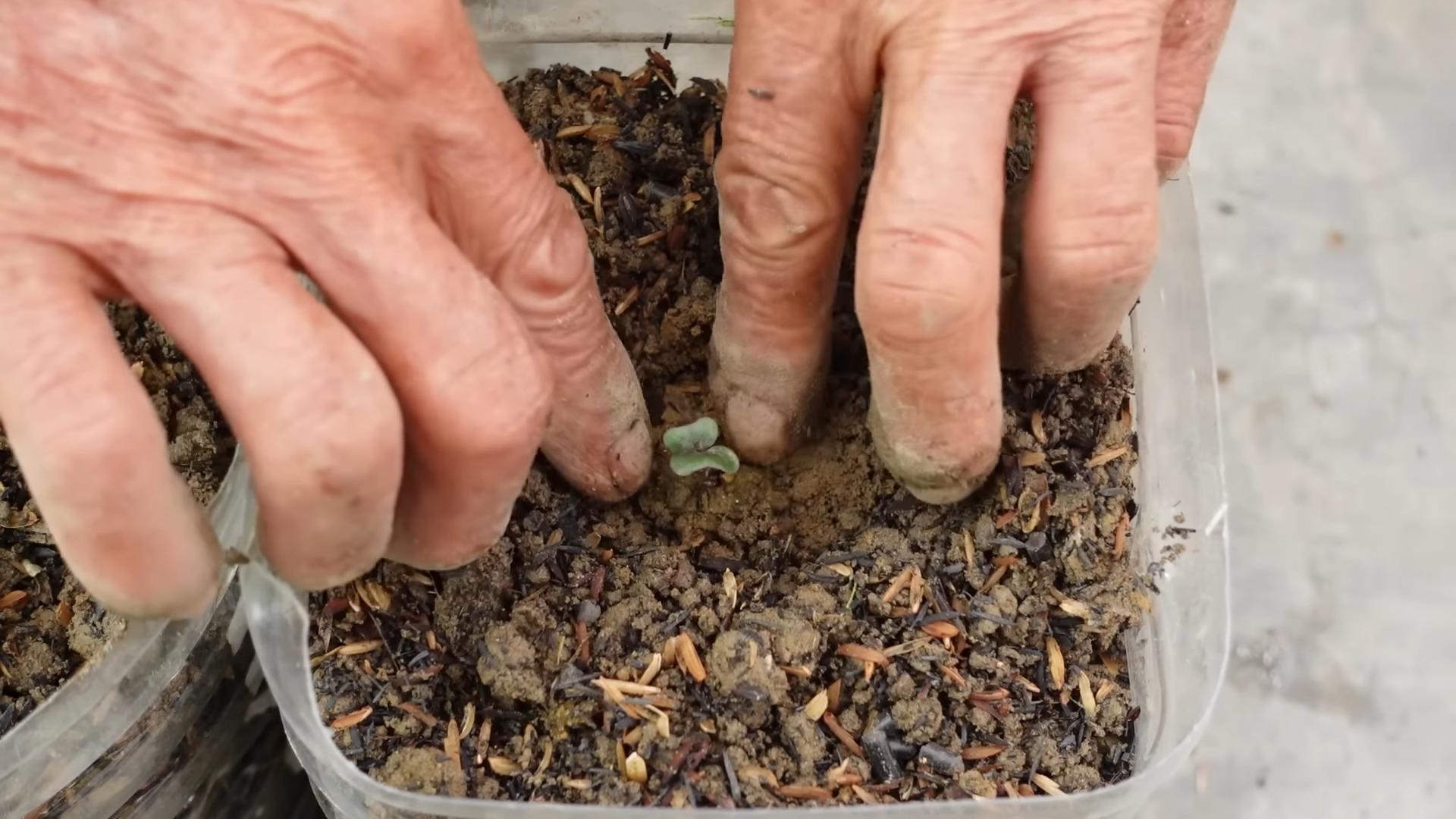Grow Purple Cabbage Backyard: Imagine stepping into your backyard and harvesting vibrant, jewel-toned purple cabbages, ready to be transformed into delicious and healthy meals. Sounds like a dream, right? Well, it doesn’t have to be! This DIY guide is your passport to cultivating these beauties right in your own backyard, even if you’re a complete beginner.
For centuries, cabbage has been a staple in diets across the globe, with its purple cousin adding a touch of regal flair. From ancient Roman banquets to modern-day farmers’ markets, the purple cabbage has always been admired for its beauty and nutritional benefits. But why buy it at the store when you can grow purple cabbage backyard and enjoy the freshest, most flavorful produce imaginable?
Let’s face it, store-bought vegetables can be expensive and often lack the vibrant taste of homegrown produce. Plus, there’s nothing quite like the satisfaction of nurturing a plant from seed to harvest. This DIY guide will provide you with simple, easy-to-follow tricks and hacks to ensure your purple cabbage thrives, even if you have limited space or experience. We’ll cover everything from soil preparation and seed starting to pest control and harvesting, so you can enjoy a bountiful crop of purple cabbages all season long. Get ready to roll up your sleeves and transform your backyard into a purple cabbage paradise!

Growing Gorgeous Purple Cabbage in Your Backyard: A DIY Guide
Okay, cabbage lovers! Let’s talk about growing those beautiful, vibrant purple cabbages right in your own backyard. It’s easier than you might think, and the reward of harvesting your own colorful, nutritious veggies is totally worth it. I’m going to walk you through everything, from seed to harvest, so you can enjoy fresh, homegrown purple cabbage.
Choosing the Right Variety
First things first, you need to pick your purple cabbage variety. There are a few popular options, each with slightly different characteristics:
* ‘Red Acre’: This is a classic, reliable variety known for its deep purple color and good storage capabilities. It matures relatively quickly, making it a great choice for beginners.
* ‘Ruby Ball’: As the name suggests, this variety produces round, compact heads with a beautiful ruby-red hue. It’s also known for its sweetness.
* ‘Red Express’: If you’re looking for a fast-maturing option, ‘Red Express’ is your go-to. It’s perfect for succession planting, allowing you to harvest cabbages throughout the growing season.
* ‘Scarlet O’Hara’: This is a later-maturing variety, but it’s worth the wait. It produces large, dense heads with excellent flavor and storage potential.
Consider your climate, growing season length, and personal preferences when making your choice. I personally love ‘Red Acre’ for its reliability and beautiful color.
Getting Started: Planting Your Purple Cabbage
There are two main ways to start your purple cabbage: from seed indoors or by purchasing transplants. Starting from seed gives you more control over the process, but transplants can be a convenient option if you’re short on time or space.
Starting from Seed Indoors
This is my preferred method because it allows me to get a head start on the growing season.
1. Gather Your Supplies: You’ll need seed starting trays or small pots, seed starting mix (a light, well-draining mix is crucial), purple cabbage seeds, a spray bottle, and a grow light (optional, but highly recommended).
2. Sow the Seeds: Fill your trays or pots with seed starting mix, moisten it gently with the spray bottle, and sow the seeds about ¼ inch deep. I usually plant 2-3 seeds per cell or pot to increase the chances of germination.
3. Provide Warmth and Light: Cover the trays or pots with a clear plastic dome or plastic wrap to create a humid environment. Place them in a warm location (around 70-75°F) until the seeds germinate. Once the seedlings emerge (usually within 5-10 days), remove the cover and place them under a grow light or in a sunny window.
4. Water Regularly: Keep the soil consistently moist, but not soggy. Water from the bottom to avoid damping off, a fungal disease that can kill young seedlings.
5. Thin the Seedlings: Once the seedlings have developed their first true leaves (the leaves that appear after the initial seed leaves), thin them to one plant per cell or pot. Choose the strongest, healthiest seedling and gently snip off the others at the soil line.
6. Harden Off the Seedlings: Before transplanting the seedlings outdoors, you need to harden them off. This process gradually acclimates them to outdoor conditions. Start by placing the seedlings outdoors in a sheltered location for an hour or two each day, gradually increasing the amount of time they spend outside over the course of a week or two.
Purchasing Transplants
If you’re buying transplants, choose healthy-looking plants with sturdy stems and vibrant green or purple leaves. Avoid plants that are leggy, yellowed, or have signs of pests or diseases.
Preparing the Garden Bed
Purple cabbage needs a sunny location with well-drained soil. It prefers a soil pH between 6.0 and 7.0.
1. Choose a Sunny Spot: Select a location in your garden that receives at least 6 hours of direct sunlight per day.
2. Amend the Soil: Cabbage is a heavy feeder, so it’s important to amend the soil with plenty of organic matter, such as compost or well-rotted manure. This will improve drainage, fertility, and water retention. I usually add a generous layer of compost to the garden bed and work it into the soil.
3. Test the Soil pH: Use a soil testing kit to determine the pH of your soil. If the pH is too low (acidic), you can add lime to raise it. If the pH is too high (alkaline), you can add sulfur to lower it.
4. Ensure Good Drainage: Cabbage doesn’t like to sit in soggy soil, so make sure your garden bed has good drainage. If your soil is heavy clay, you can improve drainage by adding sand or perlite.
Transplanting Your Purple Cabbage
Once your seedlings are hardened off or you’ve purchased transplants, it’s time to plant them in the garden.
1. Choose the Right Time: Transplant your purple cabbage seedlings outdoors after the last frost in spring. You can also plant a fall crop in late summer or early fall.
2. Space the Plants Properly: Space the plants about 18-24 inches apart in rows that are 24-36 inches apart. This will give them enough room to grow and mature.
3. Dig the Holes: Dig holes that are slightly larger than the root balls of the seedlings.
4. Plant the Seedlings: Gently remove the seedlings from their trays or pots and place them in the holes. Make sure the top of the root ball is level with the soil surface.
5. Fill the Holes: Fill the holes with soil and gently firm the soil around the plants.
6. Water Thoroughly: Water the plants thoroughly after transplanting to help them settle in.
Caring for Your Purple Cabbage
Once your purple cabbage is planted, it’s important to provide it with the care it needs to thrive.
1. Water Regularly: Cabbage needs consistent moisture, especially during hot, dry weather. Water deeply and regularly, aiming for about 1-1.5 inches of water per week.
2. Fertilize Regularly: Feed your cabbage plants with a balanced fertilizer every 2-3 weeks. You can use a liquid fertilizer or a granular fertilizer. Follow the instructions on the fertilizer package. I like to use a fertilizer that’s high in nitrogen to promote leafy growth.
3. Control Weeds: Weeds can compete with cabbage for nutrients and water, so it’s important to keep the garden bed weed-free. You can hand-pull weeds or use a hoe to cultivate the soil. Mulching around the plants can also help to suppress weeds.
4. Protect from Pests: Cabbage can be susceptible to several pests, including cabbage worms, cabbage loopers, and aphids. Inspect your plants regularly for signs of pests and take action if necessary. You can use organic pest control methods, such as Bacillus thuringiensis (Bt) for cabbage worms and loopers, or insecticidal soap for aphids. Row covers can also be used to prevent pests from reaching the plants.
5. Watch Out for Diseases: Cabbage can also be affected by diseases, such as black rot and clubroot. Choose disease-resistant varieties and practice good sanitation to prevent diseases. If you notice signs of disease, remove the affected plants immediately and dispose of them properly.
Harvesting Your Purple Cabbage
Purple cabbage is typically ready to harvest 70-100 days after transplanting, depending on the variety.
1. Check for Firmness: The cabbage head should be firm and dense to the touch.
2. Look for the Right Size: The size of the head will vary depending on the variety, but it should be close to the mature size listed on the seed packet or plant tag.
3. Cut the Head: Use a sharp knife to cut the head from the stem, leaving a few outer leaves attached.
4. Store Properly: Store harvested cabbage in the refrigerator for up to several weeks.
Troubleshooting Common Problems
Even with the best care, you might encounter some problems while growing purple cabbage. Here are a few common issues and how to address them:
* Cabbage Worms: These green caterpillars can quickly devour cabbage leaves. Handpick them off the plants or spray with Bt.
* Aphids: These tiny insects suck sap from the leaves, causing them to curl and distort. Spray with insecticidal soap.
* Slugs and Snails: These pests can damage cabbage leaves, especially young seedlings. Use slug bait or handpick them off the plants at night.
* Bolting: This occurs when cabbage plants flower prematurely, usually due to stress from heat or drought. Provide consistent moisture and shade during hot weather to prevent bolting.
* Splitting Heads: This can happen when cabbage heads grow too quickly after a period of drought. Water regularly and consistently

Conclusion
So, there you have it! Growing your own vibrant purple cabbage in your backyard isn’t just a gardening project; it’s an investment in fresh, flavorful, and visually stunning produce. We’ve walked you through the simple steps, from selecting the right seeds to nurturing your plants to a bountiful harvest. But why is this DIY trick a must-try?
Firstly, the taste. Store-bought cabbage, while convenient, often lacks the robust, slightly peppery flavor that homegrown purple cabbage possesses. When you grow your own, you control the entire process, ensuring optimal growing conditions and harvesting at peak ripeness. This translates to a superior taste experience that will elevate your salads, slaws, and cooked dishes.
Secondly, the freshness. There’s nothing quite like walking out to your garden and harvesting a head of cabbage just minutes before you need it. This eliminates the need for long storage times, which can diminish the nutritional value and flavor of the vegetable. You’re getting the freshest, most nutrient-packed purple cabbage possible.
Thirdly, the cost savings. While there’s an initial investment in seeds and supplies, growing your own purple cabbage can save you money in the long run, especially if you consume it regularly. Plus, you’ll have the satisfaction of knowing you grew it yourself!
But the benefits don’t stop there. Growing purple cabbage is also a rewarding experience that connects you with nature and provides a sense of accomplishment. It’s a great way to get outdoors, relieve stress, and learn about the natural world.
Now, let’s talk about variations. While we’ve focused on the basic method, there are plenty of ways to customize your purple cabbage growing experience.
* Companion Planting: Experiment with companion planting to deter pests and improve soil health. Marigolds, dill, and rosemary are all excellent choices for planting alongside your purple cabbage.
* Soil Amendments: Consider adding different soil amendments to tailor the soil to your specific needs. Compost, aged manure, and bone meal can all improve soil fertility and drainage.
* Heirloom Varieties: Explore different heirloom varieties of purple cabbage for unique flavors and colors. ‘Red Express’ and ‘Ruby Perfection’ are two popular choices.
* Container Gardening: If you have limited space, you can even grow purple cabbage in containers. Just make sure to choose a large container with good drainage.
We encourage you to give this DIY trick a try. It’s easier than you might think, and the rewards are well worth the effort. Imagine serving a vibrant purple cabbage slaw at your next barbecue, knowing that you grew the cabbage yourself. Or adding a pop of color and flavor to your stir-fries with freshly harvested leaves.
Don’t be afraid to experiment and find what works best for you. Gardening is a journey of learning and discovery, so embrace the challenges and celebrate the successes.
And most importantly, we want to hear about your experience! Share your photos, tips, and stories with us in the comments below. Let’s create a community of purple cabbage growers and inspire others to get their hands dirty. What are you waiting for? Start growing your own beautiful and delicious purple cabbage today!
Frequently Asked Questions (FAQ)
What is the best time of year to plant purple cabbage?
The best time to plant purple cabbage depends on your climate. In general, it’s best to plant in early spring for a summer harvest or in late summer for a fall harvest. Purple cabbage prefers cooler temperatures, so avoid planting during the hottest months of the year. Check your local frost dates to determine the optimal planting time for your region. If you are in a warmer climate, you can plant in the fall for a winter harvest.
How much sunlight does purple cabbage need?
Purple cabbage needs at least 6 hours of sunlight per day to thrive. Choose a location in your garden that receives full sun for the best results. If you live in a particularly hot climate, some afternoon shade can be beneficial to prevent the leaves from scorching. Insufficient sunlight can lead to leggy plants and smaller heads of cabbage.
What kind of soil is best for growing purple cabbage?
Purple cabbage prefers well-drained soil that is rich in organic matter. The ideal soil pH is between 6.0 and 7.0. Before planting, amend your soil with compost, aged manure, or other organic materials to improve its fertility and drainage. You can also add lime to raise the pH if your soil is too acidic. A soil test can help you determine the specific needs of your soil.
How often should I water my purple cabbage plants?
Water your purple cabbage plants regularly, especially during dry periods. Aim to keep the soil consistently moist but not waterlogged. Water deeply at the base of the plants, avoiding wetting the leaves, which can increase the risk of fungal diseases. Mulching around the plants can help retain moisture in the soil and suppress weeds.
What are some common pests and diseases that affect purple cabbage?
Common pests that affect purple cabbage include cabbage worms, aphids, and flea beetles. Diseases include clubroot, black rot, and downy mildew. To prevent pests and diseases, practice good garden hygiene, such as removing plant debris and rotating crops. You can also use organic pest control methods, such as insecticidal soap or neem oil. For diseases, ensure good air circulation and avoid overhead watering.
How do I know when my purple cabbage is ready to harvest?
Purple cabbage is ready to harvest when the head is firm and tightly packed. The size of the head will vary depending on the variety, but it should be at least 6 inches in diameter. To harvest, use a sharp knife to cut the head from the stem, leaving a few outer leaves intact. You can store harvested cabbage in the refrigerator for several weeks.
Can I grow purple cabbage in containers?
Yes, you can grow purple cabbage in containers, but you’ll need to choose a large container with good drainage. A 5-gallon container is a good starting point. Use a high-quality potting mix and water regularly. Container-grown cabbage may require more frequent fertilization than cabbage grown in the ground.
How can I prevent my purple cabbage from splitting?
Splitting can occur when cabbage heads grow too quickly due to excessive watering or fertilization. To prevent splitting, water consistently but avoid overwatering. You can also try twisting the head slightly to break some of the roots, which will slow down growth. Harvest the cabbage as soon as it’s mature to prevent it from splitting.
What are some good companion plants for purple cabbage?
Good companion plants for purple cabbage include marigolds, dill, rosemary, thyme, and chamomile. These plants can help deter pests, attract beneficial insects, and improve soil health. Avoid planting purple cabbage near other members of the brassica family, such as broccoli, cauliflower, and kale, as they can attract the same pests and diseases.
Can I save seeds from my purple cabbage to plant next year?
Saving seeds from purple cabbage can be challenging because it is a biennial plant, meaning it takes two years to produce seeds. You would need to overwinter the plant and allow it to flower and produce seeds in the second year. However, if you are up for the challenge, you can save the seeds and use them to grow more purple cabbage in the future. Make sure to choose open-pollinated varieties for seed saving, as hybrid varieties may not produce true-to-type seeds.





Leave a Comment